Explorez Kharkhorin - Voyage en Mongolie, Asie
Bienvenue à Kharkhorin, un trésor historique niché au cœur de la Mongolie. Ancienne capitale vibrante de l'Empire Mongol sous le légendaire Gengis Khan, Kharkhorin se dresse comme un témoignage de la riche culture et de l'histoire de la Mongolie. Cette ville antique possède une combinaison unique d'importance historique et de paysages époustouflants, en faisant une destination incontournable pour un voyage de rêve en Mongolie. En mettant le pied à Kharkhorin, vous ferez un saut dans le temps, à une époque de grands palais, de routes commerciales prospères et d'échanges culturels sans pareils. Que vous soyez intrigué par les ruines anciennes, désireux d'explorer les traditions locales ou simplement en quête d'une immersion dans la beauté naturelle de la Mongolie, Kharkhorin a quelque chose à offrir à chacun.
Population : Environ 1 000 habitants en 2020.
Économie : L'une des attractions touristiques les plus importantes de la Mongolie et l'ancienne capitale de l'Empire Mongol.
Monuments : Célèbre pour les Ruines de Kharkhorin, le Monastère d'Erdene Zuu, et la Vallée d'Orkhon, un site du patrimoine mondial de l'UNESCO.
Mongolia
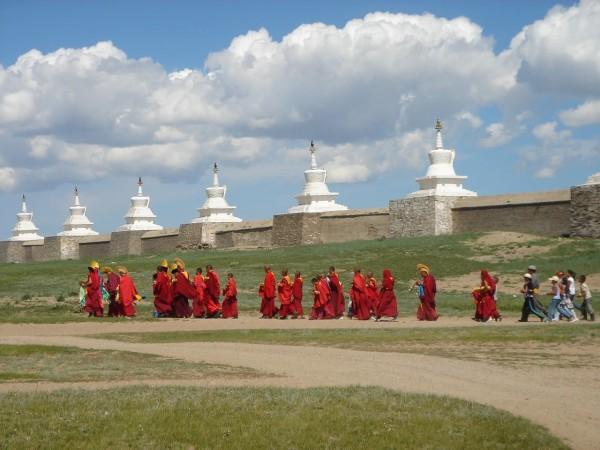
Vue d'ensemble de Kharkhorin
Histoire et Influence Culturelle
L'histoire de Kharkhorin commence au 13ème siècle, lorsqu'elle devient la capitale de l'Empire Mongol. Fondée par Gengis Khan, la ville se transforme rapidement en un centre animé de commerce et de culture. Sa situation stratégique à la croisée des anciennes routes commerciales en fait un carrefour d'influences diverses, allant de l'Asie centrale à la Chine. Les vestiges de cette histoire riche se ressentent encore aujourd'hui. Les murs anciens de Kharkhorin, ses monastères et ses artefacts offrent un aperçu de son passé illustre. La ville n'était pas seulement un centre gouvernemental, mais aussi un phare culturel, attirant des intellectuels, des artisans et des commerçants du monde entier.
L'influence de l'histoire de Kharkhorin se prolonge jusqu'à aujourd'hui, façonnant la culture et les traditions mongoles. L'héritage de la ville est visible dans les coutumes locales, les arts et les festivals célébrés par le peuple mongol. Des métiers traditionnels à la célébration d'événements historiques, le passé de Kharkhorin continue d'inspirer et d'enrichir la culture locale.
Interaction avec les habitants
Kharkhorin, une ville historique de Mongolie, compte une population modeste d'environ 1 000 habitants. Cette petite communauté maintient un mélange de culture traditionnelle mongole et de vie moderne, offrant aux visiteurs un aperçu authentique du mode de vie local tout en préservant le riche héritage historique de la ville. Les habitants de Kharkhorin sont connus pour leur chaleur et leur hospitalité, offrant aux visiteurs un véritable goût de la vie mongole. Les modes de vie nomades traditionnels sont encore prédominants, et vous pouvez les vivre de manière authentique en participant aux coutumes et célébrations locales.
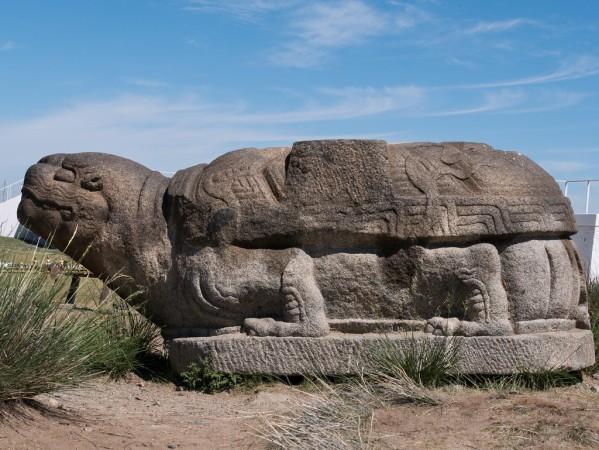
Khorgo Rock - © Flickr
Principales Attractions à Kharkhorin
Monastère d'Erdene Zuu
Aucun voyage à Kharkhorin ne serait complet sans visiter le Monastère d'Erdene Zuu, l'un des plus anciens et des plus importants monastères bouddhistes de Mongolie. Fondé au 16ème siècle, cet exploit architectural est entouré de murs anciens et présente des designs complexes qui reflètent l'art bouddhiste mongol traditionnel. Le cadre paisible du monastère et son importance historique en font un lieu incontournable pour votre voyage en Mongolie.
Musée de Kharkhorin
Pour une compréhension plus approfondie du passé de Kharkhorin, le Musée de Kharkhorin propose une vaste collection d'artefacts et d'expositions. Le musée fournit des informations sur le rôle de la ville dans l'Empire Mongol, présentant des reliques, des documents historiques et des maquettes d'architectures anciennes. C'est un excellent point de départ pour explorer l'histoire riche de cette ville légendaire.
Ruines de Kharkhorin
Les Ruines de Kharkhorin sont un monument remarquable qui conserve les vestiges de l'ancienne capitale mongole. Ces ruines offrent un aperçu de la magnificence de la ville à son apogée. Promenez-vous parmi les fondations anciennes et imaginez la vie animée qui y prospérait autrefois. Le site offre un contraste évocateur avec les attractions mieux préservées, mettant en lumière l'évolution historique de Kharkhorin.
Roche Tortue (Roche Khorgo)
La Roche Tortue, située à Kharkhorin, est une merveille naturelle en forme de grande tortue. Ce phénomène géologique est un endroit populaire pour prendre des photos et un lieu de prédilection pour les amoureux de la nature. Le paysage environnant est tout aussi impressionnant, avec un terrain accidenté et des vues panoramiques qui offrent une échappée pittoresque des sites historiques de la ville.
Cascade Ulaan Tsutgalan
Située à environ 90 kilomètres de Kharkhorin, la Cascade Ulaan Tsutgalan est une attraction naturelle époustouflante. Connue pour sa chute impressionnante et les environs verdoyants, c'est un endroit idéal pour la randonnée et les pique-niques. La cascade est la scène la plus spectaculaire au printemps et en été, lorsque le débit de l'eau est à son maximum.
Vallée d'Orkhon
La Vallée d'Orkhon, site du patrimoine mondial de l'UNESCO, se trouve près de Kharkhorin et est réputée pour son importance culturelle et historique. La vallée est parsemée de monuments anciens, dont les ruines de sites turcs et mongols anciens. C'est un véritable trésor pour les passionnés d'histoire et elle offre des paysages à couper le souffle, idéaux pour des activités de plein air comme la randonnée et l'équitation.
Monastère de Tuvkhun
Situé sur une colline rocheuse, le Monastère de Tuvkhun est un lieu historique et spirituel pour ceux qui recherchent un refuge paisible. Fondé au 17ème siècle, ce monastère offre des vues spectaculaires sur la Vallée d'Orkhon et les montagnes environnantes. Le site est d'une grande importance en raison de sa connexion avec le bouddhisme mongol et de son rôle en tant que retraite pour la méditation et la réflexion.
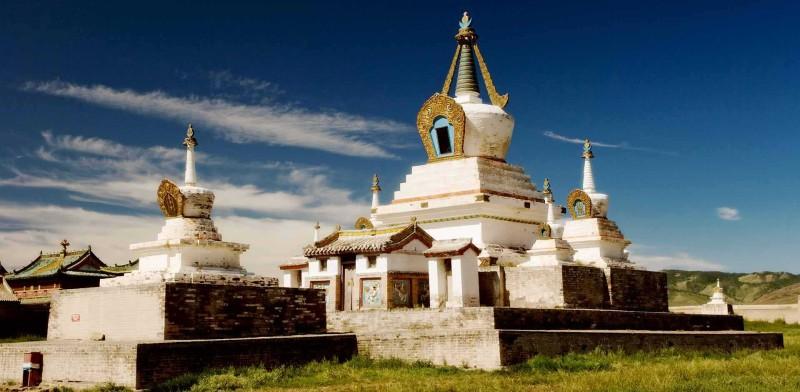
Monastère d'Erdene Zuu - © Wikimedia
Plats à Essayer à Kharkhorin
Lors de votre visite à Kharkhorin, goûter à la cuisine locale est un impératif. La nourriture mongole est copieuse, savoureuse et profondément ancrée dans les traditions nomades du pays.
- Khorkhog : Un barbecue mongol traditionnel, le Khorkhog est préparé en cuisant de la viande (souvent de l'agneau) avec des pierres chaudes dans un récipient scellé. Le résultat est un plat tendre et savoureux qui capture l'essence de la cuisine mongole.
- Buuz : Ces raviolis vapeur sont remplis de viande hachée et d'épices. Les Buuz sont un aliment de base dans les foyers mongols, souvent dégustés lors d'occasions spéciales et de festivals.
- Barbecue Mongol : Bien que connu dans le monde entier, le barbecue mongol que vous trouverez à Kharkhorin a une touche authentique, avec des ingrédients frais et des méthodes de cuisson traditionnelles.
- Aaruul : L'Aaruul est un caillé sec classique préparé à partir de lait fermenté. Cette collation chewy et acidulée est un aliment de base dans le régime alimentaire mongol, apportant des nutriments essentiels et de l'énergie. L'Aaruul est souvent dégusté avec du thé ou comme encas nutritif lors de longs voyages.
- Bansh : Semblable aux Buuz, mais plus petits, les Bansh sont des raviolis frits remplis de viande hachée et d'épices. Ils sont un aliment de rue populaire et sont généralement servis avec des sauces d'accompagnement, en faisant une friandise salée pour n'importe quel moment de la journée.
- Khuushuur : Les Khuushuur sont des pâtisseries salées remplies de viande hachée épicée, souvent de l'agneau ou du bœuf, et frites jusqu'à ce qu'elles soient croustillantes. Ces encas à emporter sont courants lors des festivals et rassemblements, offrant une croûte croquante avec une garniture juteuse.
- Thé au Lait Mongol (Suutei Tsai) : Le Suutei Tsai est un thé au lait traditionnel mongol préparé avec du thé noir, du lait et une pincée de sel. Cette boisson réconfortante est souvent appréciée avec les repas et offre une saveur chaude et salée qui complète la nature copieuse de la cuisine mongole.
- Kurut : Le Kurut est une collation de fromage séché à base de lait fermenté. Il a une saveur acidulée et une texture dure et friable, ce qui en fait un parfait accompagnement pour le thé ou un encas rapide lors des voyages.

Suutei Tsai - © Slurrp
Festivals et Célébrations Locales
Kharkhorin est animé par des célébrations culturelles tout au long de l'année, reflétant les riches traditions et l'héritage vibrant de la Mongolie. Voici quelques festivals clés à découvrir :
- Festival Naadam : C'est le festival le plus important de Mongolie, représentant les efforts de préservation réussis de la culture nomade mongole. Se déroulant en juillet, Naadam célèbre les « Trois Jeux Virils » : la lutte, la course de chevaux et le tir à l'arc.
- Tsagaan Sar : Le Nouvel An lunaire mongol, le Tsagaan Sar, marque le début du printemps et est célébré avec des plats traditionnels, des réunions familiales et des rituels. C'est une excellente occasion de découvrir l'hospitalité mongole et les traditions culturelles.
Activités Touristiques à Kharkhorin
Aventures en plein air
- Trekking : Explorez les paysages pittoresques autour de Kharkhorin avec des randonnées guidées qui offrent des vues à couper le souffle sur les montagnes et les vallées.
- Équitation : Découvrez la culture nomade mongole de manière authentique en faisant une balade à cheval à travers la campagne pittoresque.
Expériences Culturelles
- Musique et Danse Traditionnelles : Assistez à des performances de musique et de danse traditionnelles mongoles, offrant un aperçu de l'héritage artistique du pays.
- Ateliers d'Artisanat : Participez à des ateliers où vous pouvez apprendre et créer des objets d'artisanat mongols traditionnels, tels que la fabrication de feutre ou la sculpture sur bois.
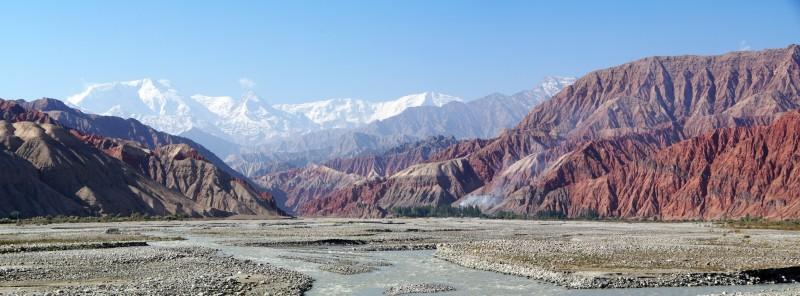
Beauté Naturelle de Karakorum - © Walter Frehner
Météo à Kharkhorin : Meilleure Période pour Visiter
Printemps à Kharkhorin
- Météo : Le printemps est une saison de transition en Mongolie. Les températures peuvent varier entre 5°C et 15°C (41°F à 59°F). Cette saison est marquée par l’épanouissement des fleurs et le retour des oiseaux migrateurs, ce qui en fait un excellent moment pour les amoureux de la nature et les photographes.
- Tendance Touristique : Le printemps offre un climat agréable pour explorer la ville et ses attractions voisines, avec moins de touristes par rapport au pic de l'été. Le temps est généralement doux, bien qu'il puisse être imprévisible, il est donc conseillé de porter des vêtements en couches.
Été à Kharkhorin
- Météo : L'été est la saison de pointe pour les voyages à Kharkhorin. Avec des températures variant entre 20°C et 30°C (68°F à 86°F), le climat est idéal pour l'exploration en plein air et les activités.
- Tendance Touristique : C'est le meilleur moment pour faire du trekking, visiter des sites historiques et profiter des paysages verdoyants autour de la ville. Le temps agréable rend également l'été parfait pour participer aux festivals locaux et événements culturels, comme le Festival Naadam.
Automne à Kharkhorin
- Météo : L'automne à Kharkhorin est caractérisé par des températures plus fraîches et un feuillage vibrant. Avec des températures variant entre 10°C et 20°C (50°F à 68°F), cette saison est idéale pour visiter et observer les couleurs changeantes de Kharkhorin.
- Tendance Touristique : Cette saison offre moins de foule et une atmosphère plus tranquille, idéale pour ceux qui recherchent une escapade paisible. L'air frais et l'environnement magnifique rendent également les activités de plein air comme la randonnée, le trekking et la photographie encore plus agréables.
Hiver à Kharkhorin
- Météo : L'hiver apporte un paysage magique recouvert de neige à Kharkhorin, avec des températures souvent inférieures à -20°C à -30°C (-4°F à -22°F). Bien que cette saison soit froide, elle attire les voyageurs désireux de découvrir la beauté hivernale sereine de la Mongolie et de pratiquer des sports d'hiver comme le ski et le snowboard.
- Tendance Touristique : La saison est plus calme, offrant une occasion unique d'explorer la ville et ses environs sans l'agitation habituelle des touristes. Il est essentiel de porter des vêtements chauds et de se préparer à des conditions froides pour les visiteurs hivernaux.
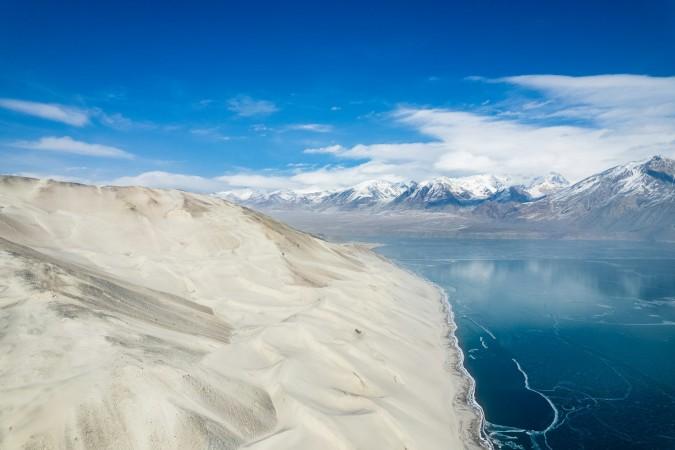
Karakorum en Hiver - © darmau
Expérience de Shopping à Kharkhorin
Les marchés de Kharkhorin sont un centre animé pour faire du shopping et découvrir la vie locale.
- Marché de Kharkhorin : Ce marché dynamique est l'endroit idéal pour acheter des produits mongols traditionnels, y compris des objets artisanaux faits main, des vêtements et des souvenirs.
- Artisanat Local : Recherchez des objets artisanaux distinctifs de Mongolie tels que des bijoux en argent complexes, des articles en laine et des vêtements traditionnels.
- Lorsque vous faites du shopping à Kharkhorin, ne manquez pas ces articles spéciaux :
- Produits en Cachemire : La Mongolie est mondialement connue pour son cachemire de haute qualité, contribuant largement à l'économie en développement du pays. Vous y trouverez des pulls, des écharpes et des châles en cachemire luxueux, des souvenirs durables de votre voyage.
- Art Traditionnel : Les objets faits main, tels que les peintures Thangka et l'art traditionnel mongol, sont des souvenirs uniques et significatifs.
Étiquette Culturelle à Kharkhorin
- Comportement Respectueux : Comprendre et respecter les coutumes locales est essentiel pour une expérience positive à Kharkhorin. Voici un guide des aspects essentiels de l’étiquette mongole :
- Salutations : Les salutations traditionnelles mongoles consistent à joindre les mains dans un geste semblable à une prière et à offrir un sourire chaleureux. Les poignées de main sont très populaires, surtout entre hommes.
- Code Vestimentaire : Habillez-vous modestement, en particulier lors de visites de sites religieux. Les vêtements traditionnels mongols sont appréciés, mais des vêtements décontractés et respectueux sont également acceptables.
- Étiquette à Table : Lors des repas, il est poli d'attendre que l'hôte vous serve en premier. Il est coutumier de finir toute la nourriture dans votre assiette comme signe de respect pour le repas.
- Photographie : Demandez toujours la permission avant de prendre des photos de personnes, surtout dans les zones rurales ou dans les sites religieux. Respecter cette étiquette garantit une interaction positive avec les habitants.
- Coutumes de Cadeaux : Lors de la visite chez quelqu'un ou en participant à un événement local, offrir un cadeau modeste est un geste apprécié. Les cadeaux traditionnels peuvent inclure des bonbons, des fruits ou des objets artisanaux locaux.
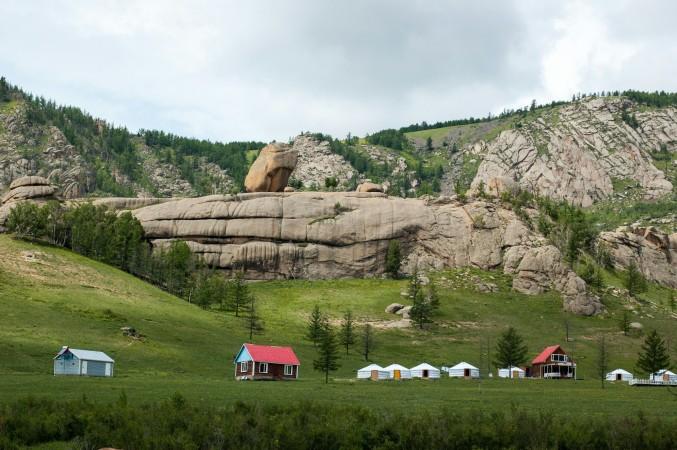
Nature de Karakorum - © Tuguldur Baatar
Informations Essentielles pour les Voyageurs
Se Déplacer à Kharkhorin
Se déplacer à Kharkhorin et dans ses environs est relativement simple grâce à diverses options de transport. À l'intérieur de la ville, la marche ou le vélo sont idéals en raison de sa taille compacte, et des taxis locaux sont disponibles pour des trajets plus longs ou des visites des attractions voisines. Pour explorer la vaste vallée d'Orkhon et les zones environnantes, la location d'une voiture offre plus de flexibilité, bien qu'un véhicule fiable soit essentiel, surtout en hiver. De nombreux visiteurs choisissent également des visites guidées qui incluent le transport et offrent des informations détaillées sur l'histoire et la culture de Kharkhorin. Les bus publics, bien que limités, offrent une option économique pour voyager entre les grandes villes et Kharkhorin, bien qu'ils soient moins flexibles.
Services de Retrait d'Argent & Bancaires
À Kharkhorin, les services bancaires et financiers de base sont disponibles mais quelque peu limités. Des guichets automatiques (ATMs) sont dispersés autour du marché central et des principales zones touristiques, bien qu'il soit conseillé de transporter un peu d'argent liquide, car leur fiabilité peut varier. Les services bancaires sont minimes dans la ville, avec les principales banques mongoles situées principalement dans les grandes villes comme Oulan-Bator. Il est donc recommandé de visiter ces banques avant de voyager. Des services de change sont disponibles dans les hôtels locaux et quelques commerces, mais les taux peuvent ne pas être aussi avantageux que dans les grandes villes.
Où Séjourner à Kharkhorin
Kharkhorin propose une variété d'options d'hébergement pour différents goûts et budgets. Les maisons d'hôtes locales offrent une expérience authentique et chaleureuse avec l'hospitalité traditionnelle mongole. Pour plus de confort, plusieurs hôtels proposent des commodités allant de basiques à haut de gamme. Pour une expérience unique, des camps traditionnels de yourtes (ger) offrent un aperçu de la vie nomade mongole et sont installés dans des endroits pittoresques autour de la ville. De plus, quelques lodges de luxe dans la région offrent des services haut de gamme et des vues spectaculaires sur les paysages environnants.
Des articles pour vous
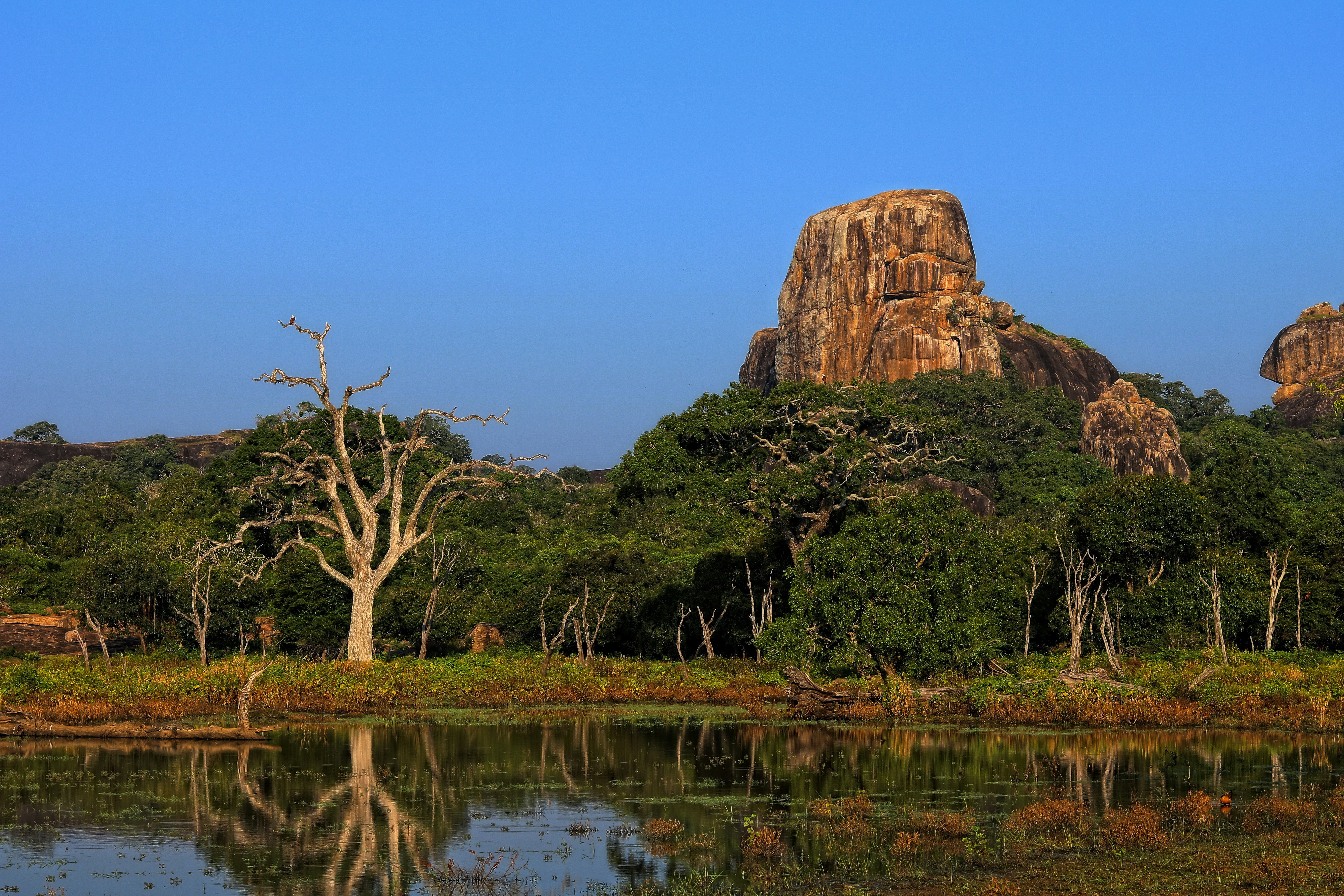
Explore Yala National Park - Sri Lanka Travel, Asia
Tucked away in Sri Lanka’s southeastern corner, Yala National Park is where wild nature meets deep tradition. Known worldwide for its leopard population, the park is also home to elephants, sloth bears, crocodiles, and hundreds of bird species. Beyond wildlife, Yala opens doors to a cultural landscape dotted with ancient temples, Buddhist ruins, and coastal villages. For travelers seeking more than just a safari, Yala offers a chance to explore eco-tourism, local communities, and sacred heritage sites.
Population: The Yala National Park area doesn’t have a human population.
Economy: The economy around Yala National Park thrives on a blend of eco-tourism, agriculture, and local services. Safari tours, eco-lodges, and cultural experiences drive steady income for nearby towns like Tissamaharama and Kataragama, supporting thousands of families.
Landmarks: Famous for Block I of Yala and wildlife encounters, including elephants, sloth bears, crocodiles, and exotic bird species.

Explore Galle - Sri Lanka Travel, Asia
Nestled on Sri Lanka’s southern coastline, Galle is a vibrant city where history meets the sea. Its cobbled streets, colonial architecture, and serene beaches make it a must-visit destination for travelers seeking a blend of culture, adventure, and relaxation. A UNESCO World Heritage site, Galle captivates visitors with its Dutch Fort, bustling markets, and friendly locals. Whether you’re exploring the ramparts at sunset or savoring fresh seafood by the shore, Galle promises an unforgettable journey into Sri Lanka’s heritage.
Population: Approximately 113,000 in 2023.
Economy: Galle’s economy thrives on tourism, trade, and fisheries. The city’s historic fort, colonial architecture, and coastal charm draw thousands of international visitors each year, making tourism its main economic driver. Fishing remains vital for local livelihoods, supplying fresh seafood across the region.
Landmarks: Famous for the Galle Fort, Dutch Reformed Church & Maritime Museum, and Unawatuna Beach.
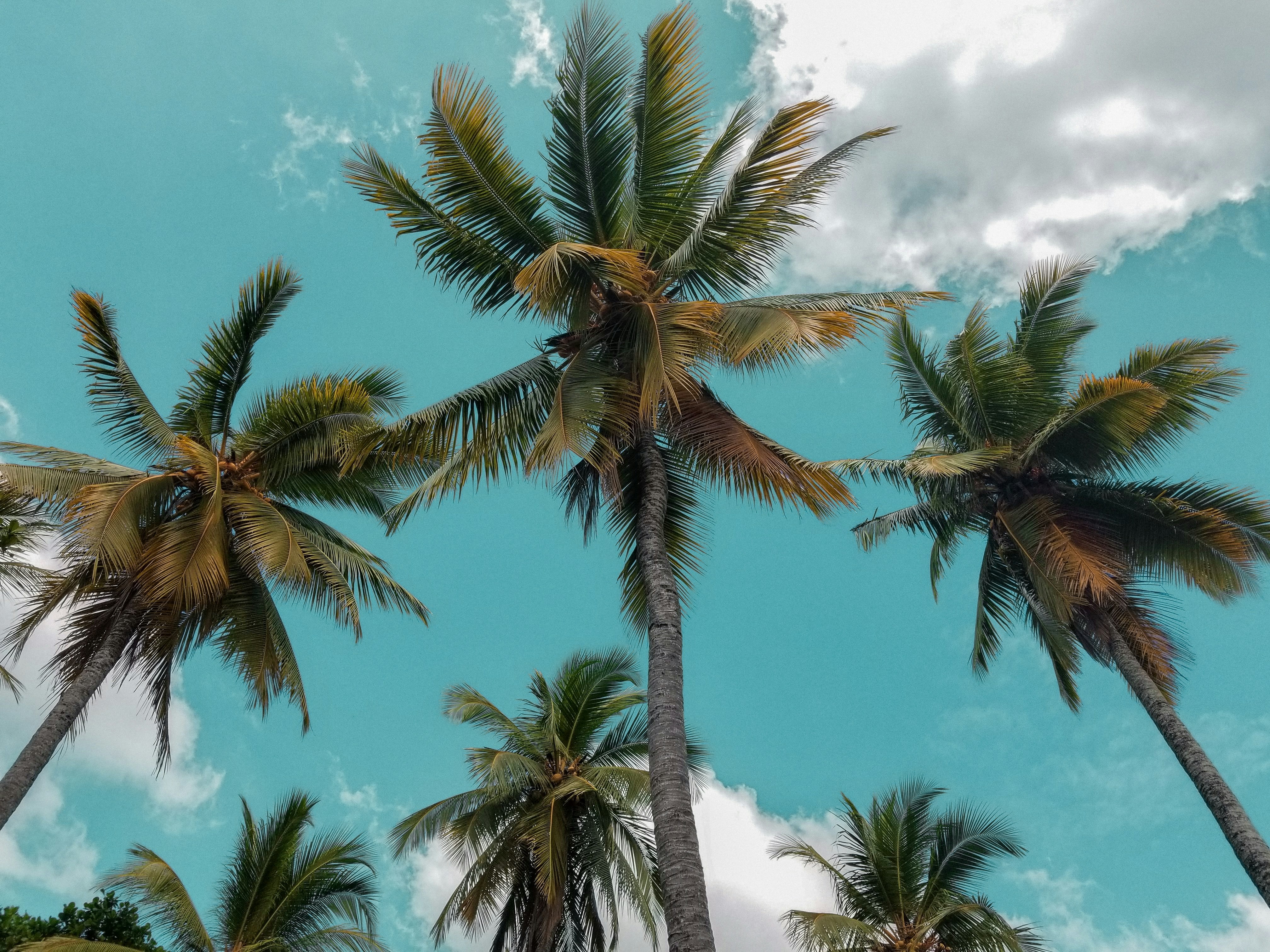
Explore Bentota - Sri Lanka Travel, Asia
Nestled along Sri Lanka’s southwestern coast, Bentota is a tropical paradise that blends golden beaches, vibrant culture, and thrilling adventures. Famous for its calm waters, luxury resorts, and scenic river estuary, Bentota has become a top destination for travelers seeking both relaxation and authentic experiences. From serene beach walks at sunrise to adrenaline-pumping water sports, this coastal town offers a perfect balance of leisure and exploration. With its proximity to Colombo and Galle, Bentota is easy to reach, making it an ideal stop for both short escapes and extended holidays.
Population: Approximately 37,000 in 2023.
Economy: Bentota’s economy thrives mainly on tourism, which drives local businesses such as hotels, restaurants, and wellness retreats. The town also benefits from fishing, coconut cultivation, and handicrafts like wood carving and batik textiles. Many residents rely on the growing demand for water sports and Ayurvedic treatments, making tourism the backbone of both income and employment in the area.
Landmarks: Famous for Bentota Beach, Bentota River Safari, and Kande Vihara Temple.

Explore Mirissa - Sri Lanka Travel, Asia
Mirissa is a charming coastal town on Sri Lanka’s southern shoreline. Known for its golden beaches, turquoise waters, and vibrant marine life, it has become a must-visit stop for travelers exploring the island. Many come for whale watching, surfing, and sunset views at Coconut Tree Hill, but Mirissa offers much more than postcard beauty. The fishing boats you see anchored by the bay carry generations of stories. Local traditions, delicious cuisine, and a laid-back rhythm of life shape every visitor’s experience.
Population: Approximately 4,700 in 2023.
Economy: Mirissa’s economy is largely shaped by its coastal location. Fishing has long been the backbone of local livelihoods, with generations relying on the Indian Ocean for income. In recent decades, tourism has become the main driver of growth, thanks to whale watching, surfing, and beachside hospitality.
Landmarks: Famous for Mirissa Beach, Coconut Tree Hill, and Parrot Rock Bridge.
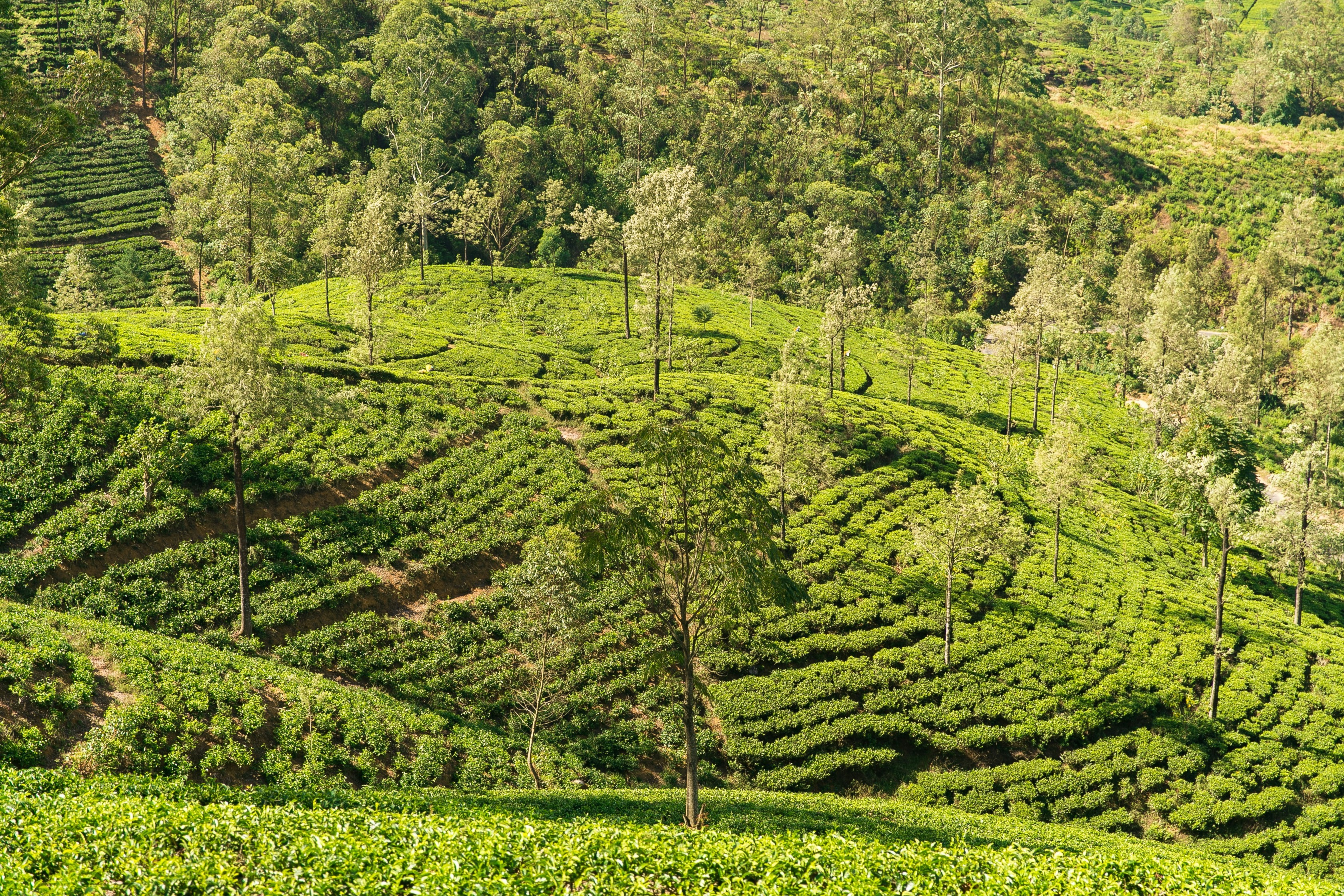
Explore Nuwara Eliya - Sri Lanka Travel, Asia
Tucked away in the Central Highlands of Sri Lanka, Nuwara Eliya is often called “Little England”. With its rolling tea plantations, cool misty mornings, and colonial charm, this mountain town feels like a step into another world. Travelers come here to breathe fresh air, walk through flower gardens, sip the finest Ceylon Tea, and enjoy a pace of life far from the island’s busy cities. Whether you’re drawn by scenic landscapes, heritage architecture, or the warmth of its people, Nuwara Eliya is a destination that blends nature, culture, and history in perfect harmony.
Population: Approximately 781,000 in 2023.
Economy: Nuwara Eliya’s economy thrives mainly on tea production, as it sits in the heart of Sri Lanka’s central highlands, famous worldwide for Ceylon Tea. The city also benefits from a growing tourism industry, attracting visitors with its colonial charm, cool climate, and scenic landscapes.
Landmarks: Famous for Gregory Lake, Hakgala Botanical Garden, and Victoria Park.
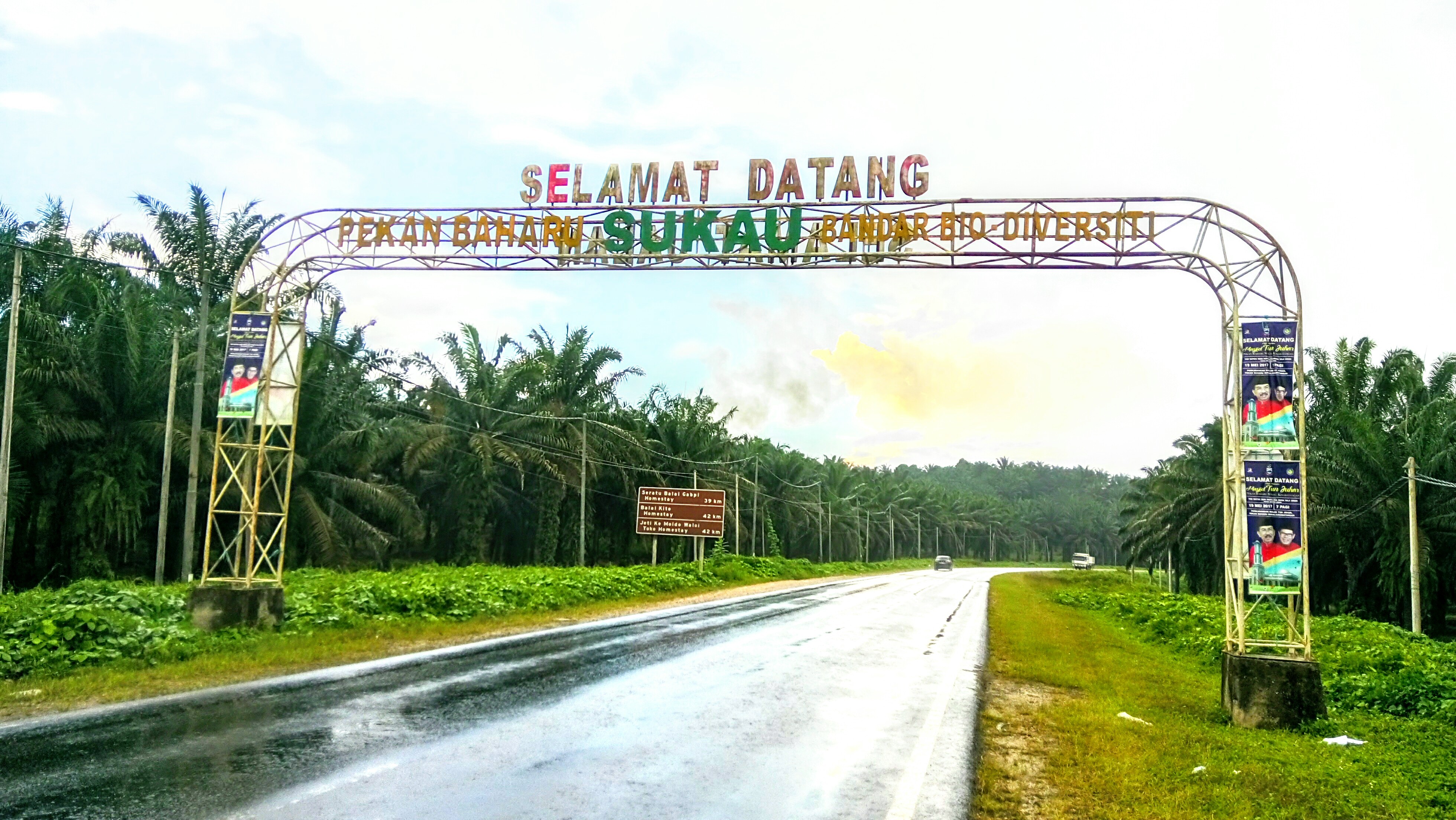
Explore Sukau - Malaysia Travel, Asia
Nestled on the banks of the Kinabatangan River in Sabah, Malaysian Borneo, Sukau is a destination where wildlife, culture, and conservation come together. Known as one of Asia’s top spots for river safaris and eco-tourism, this quiet village offers a front-row seat to encounters with Bornean orangutans, pygmy elephants, proboscis monkeys, and exotic birdlife.
Population: Approximately 1,400 in 2019.
Economy: Sukau’s economy is shaped by its riverine location and natural resources. Traditionally, the Orang Sungai community relied on fishing, small-scale farming, and forest gathering for their livelihood. Today, the village has shifted toward eco-tourism, with river cruises, jungle trekking, and homestays providing income.
Landmarks: Famous for the Kinabatangan River cruises, Gomantong Caves, and Ox-bow lakes and wetlands.
